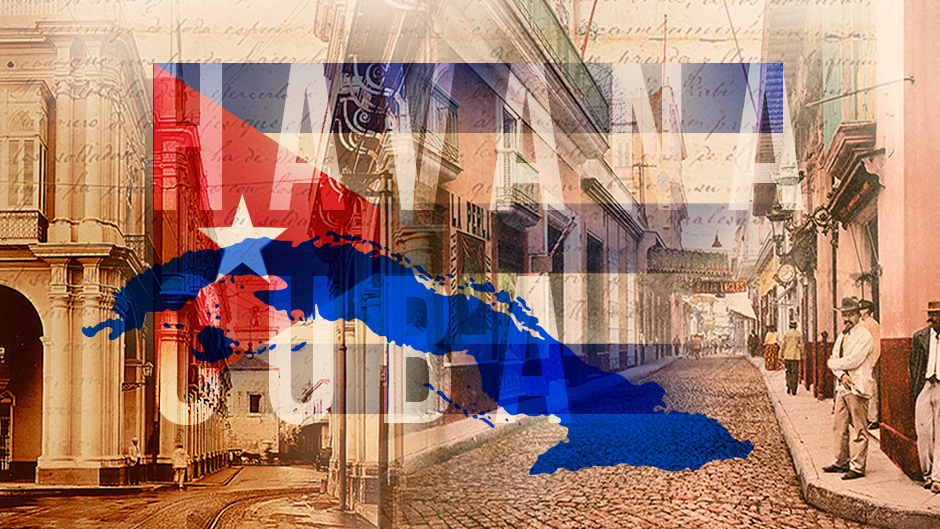Two prestigious Cuban scholars will visit the University of Miami in March to launch the Distinguished Lecture Series on Cuban Studies, which focuses on Cuba and marks the 500th anniversary of Havana. Celebrations kicked off in November.
“It is a great honor for us to host these scholars at our University,” said Jeffrey Duerk, executive vice president of academic affairs and provost. “The 500th anniversary of Havana gives us a great vantage point to examine the tremendous impact that Cuba and its history has had on our hemisphere and our Miami community.”
Guillermo J. “Willy” Prado, dean of the Graduate School who will assume additional duties as vice provost for faculty affairs on June 1, said that besides celebrating the anniversary of Havana, it is important for the University to focus on Cuba.
“Cuba is such an important topic to us here at UM and for the community at large,” said Prado. “To bring in distinguished scholars to speak about their research in these areas is very important to raise visibility here on campus and beyond.”
Lisandro Perez, professor and chair of the Latin American and Latino/a Studies at John Jay College, The City University of New York, will do a presentation on Tuesday, March 17. Michael Bustamante, assistant professor of Latin American History at Florida International University, and co-editor of “The Revolution from Within: Cuba, 1959-1980,” will speak on Friday, March 27.
A former Goizueta fellow of the University of Miami Libraries Cuban Heritage Collection (CHC), Bustamante will deliver the lecture “Corresponding Across the ‘Sugar Curtain:’ Island-Exile Communications during Cuba's Not-So-Cold War.” He conducted some of his research at the CHC, one of the largest repositories of Cuban materials.
Bustamante is finishing a book that explores how Cubans, both on and off the island, have argued about their past since Fidel Castro came to power in 1959. In this lecture, he will discuss an unexpected side product of the research for that project: evidence of correspondence between Cubans in the United States and in Cuba during the 1960s.
“We think of that period as a time when there was a wall in the Florida Straits,” said Bustamante. "And there was in many ways,” he added. “But there is evidence of people making an effort to stay in touch even though it was difficult, and contacts were politically fraught.”
In his research, Bustamante was surprised and touched by the ways that individuals circumvented the break in U.S.—Cuba relations to send letters to their relatives on the island or in Miami. Some of the correspondence was full of frank political commentary.
“These rich, deeply personal sources provide insight,” Bustamante noted, "into an important and underappreciated story—the texture of daily life for Cuban families split across the divides of the Cold War."
Bustamante emphasized that it was “exciting to celebrate the Cuban Studies at UM, a place that so many scholars have used for research, given the importance of the CHC.”
Pérez, an alumnus who has devoted his professional career to studying Cubans in the U.S., will address “Two Hundred Years of Cuban American History: Continuities and Discontinuities.” He will discuss how—even though the 1959 Cuban revolution spurred the largest ever migration of Cubans to the U.S.—the presence of Cubans in this country originated more than 200 years ago.
At the time, sugar trade between Cuba and the U.S. was at an all-time high, creating intense traffic between Havana harbor and the piers of Manhattan. New York City became the preferred destination for many of those sugar barons who left Cuba after the end of the slave trade and the start of the Ten Years’ War against Spain.
“I saw that we had a huge gap in what we know about the history of Cubans in the United States,” said Pérez. “We know about (Cuban patriot) Jose Marti’s exile in New York but there was much more than that. I sought to give New York its due as an important Cuban American community.”
Combing through census records, vital statistics, court records, and newspapers stories from the 1800’s, Pérez acquired a “longer range vision of the Cuban presence in the U.S.”
Pérez focused on community, political activism, and the settlement in New York of elite Cubans and others who followed them, such as cigar makers. And, he began to see parallels between the Cuban immigration of 1868 and 1959.
The Cuban lecture series will be held at the CHC in the second floor reading room, 1300 Memorial Drive, on the Coral Gables campus. The event is free and open to the University community. The Distinguished Lecture Series will continue in the fall semester with more scholars visiting the University.

